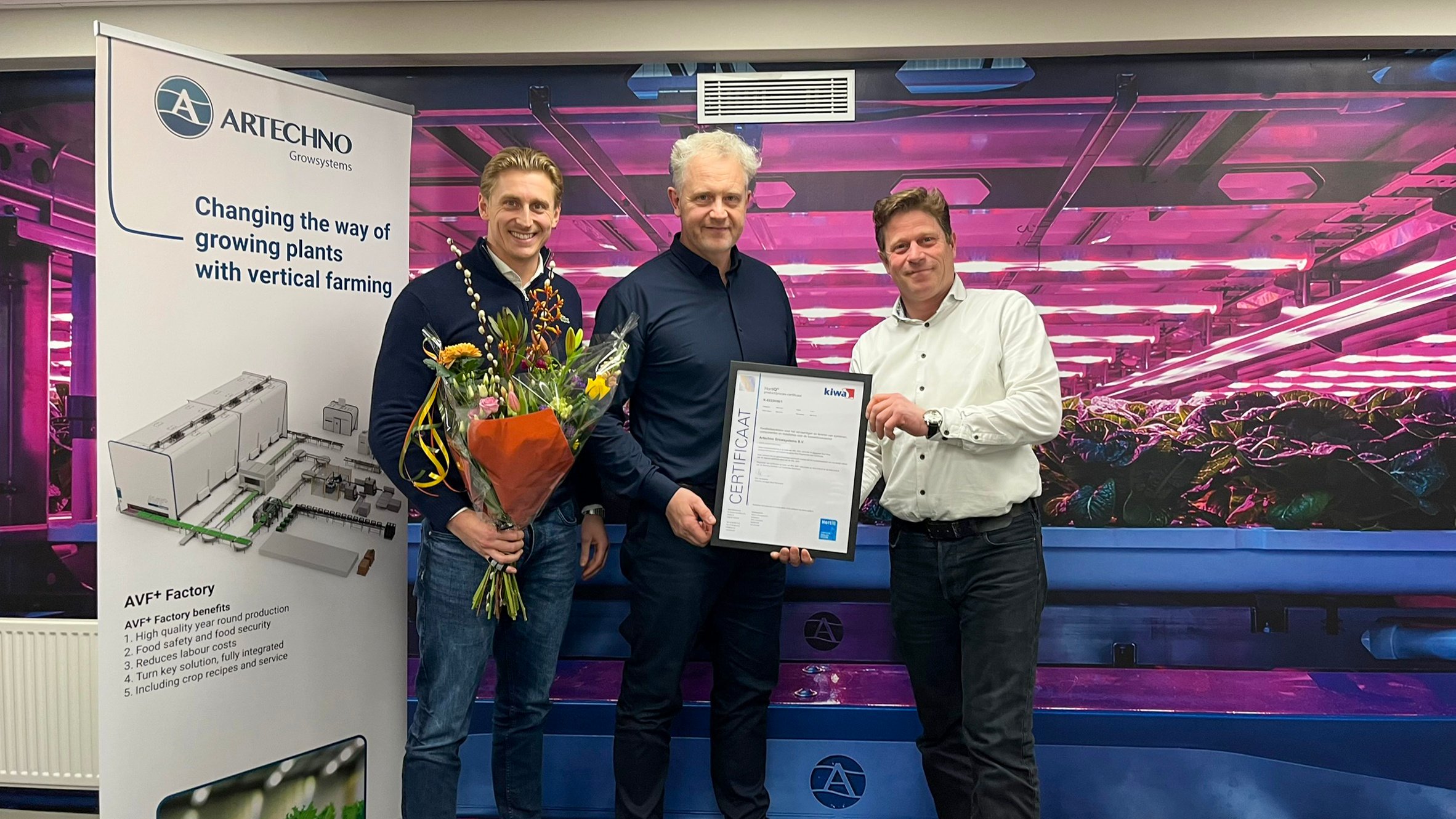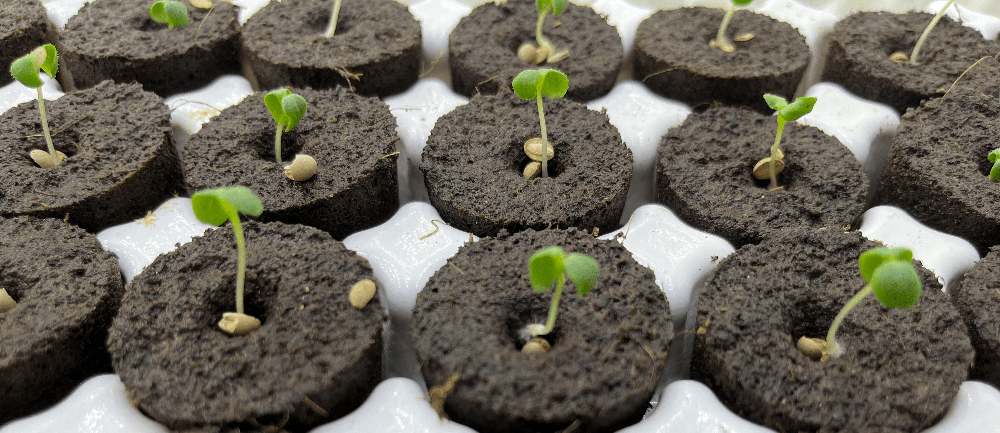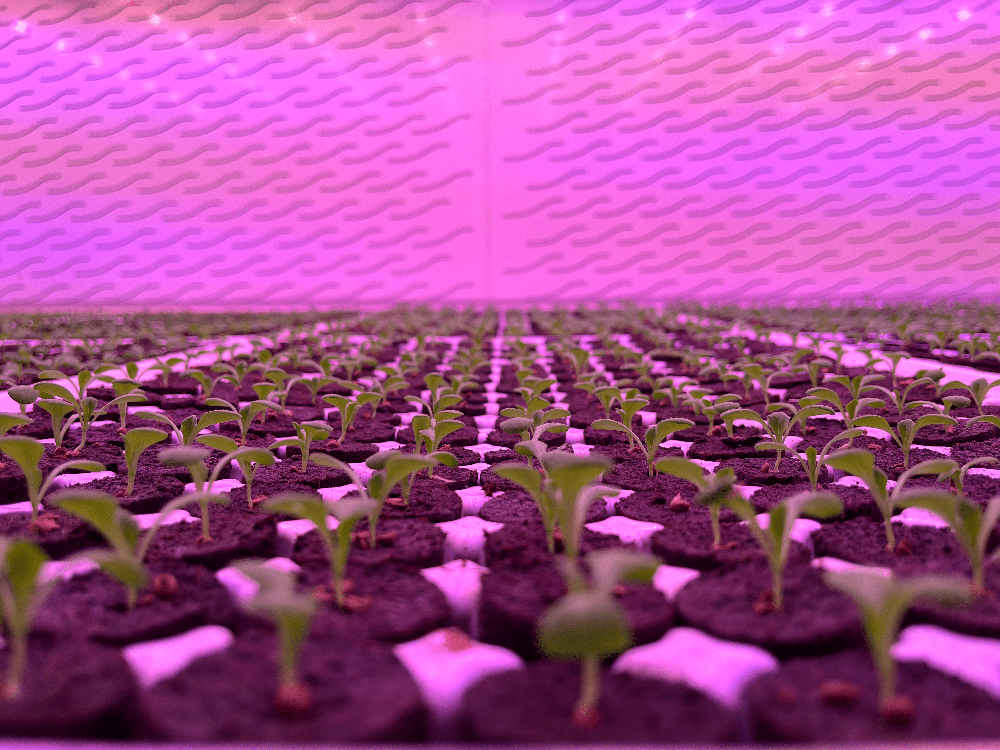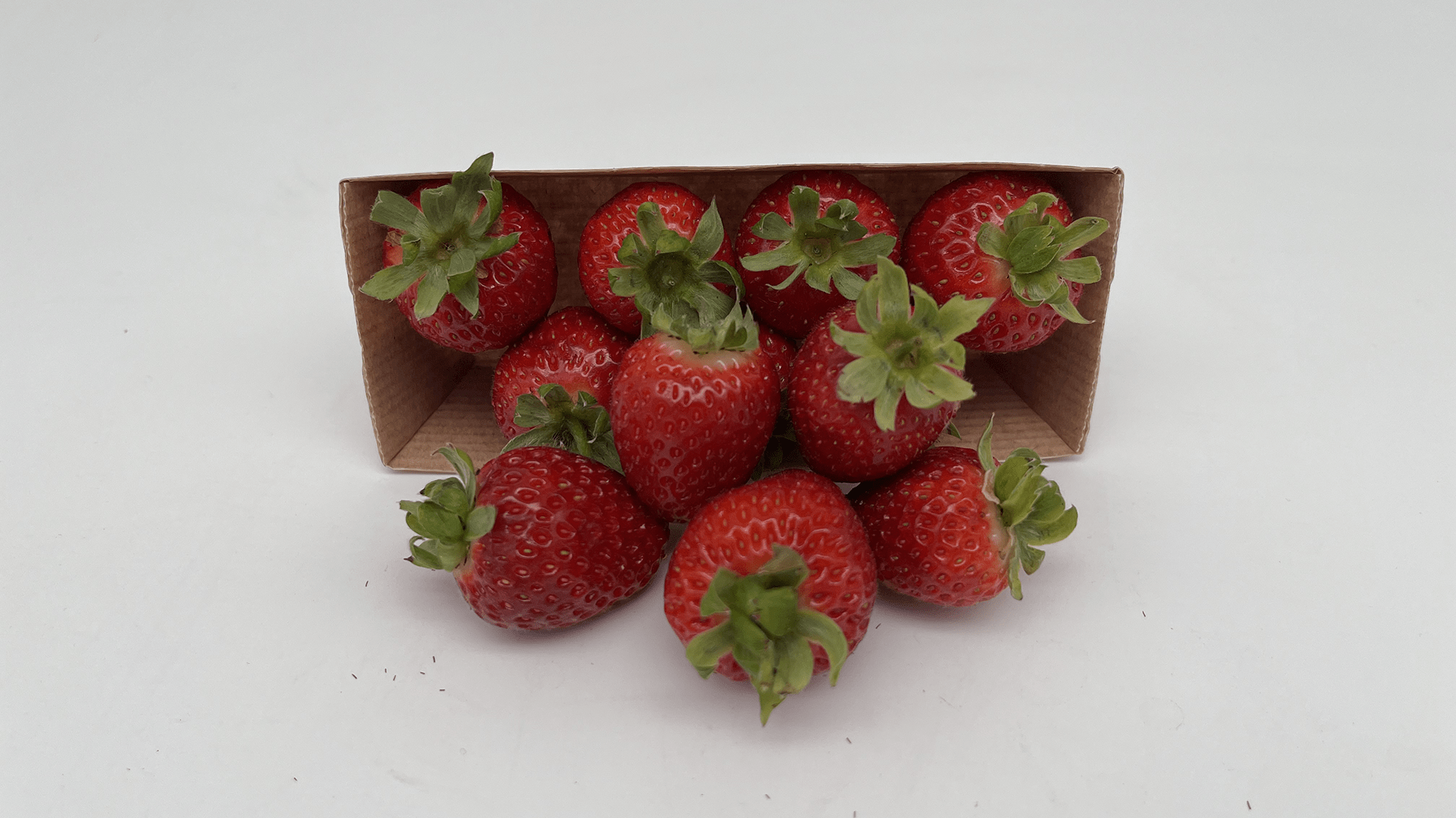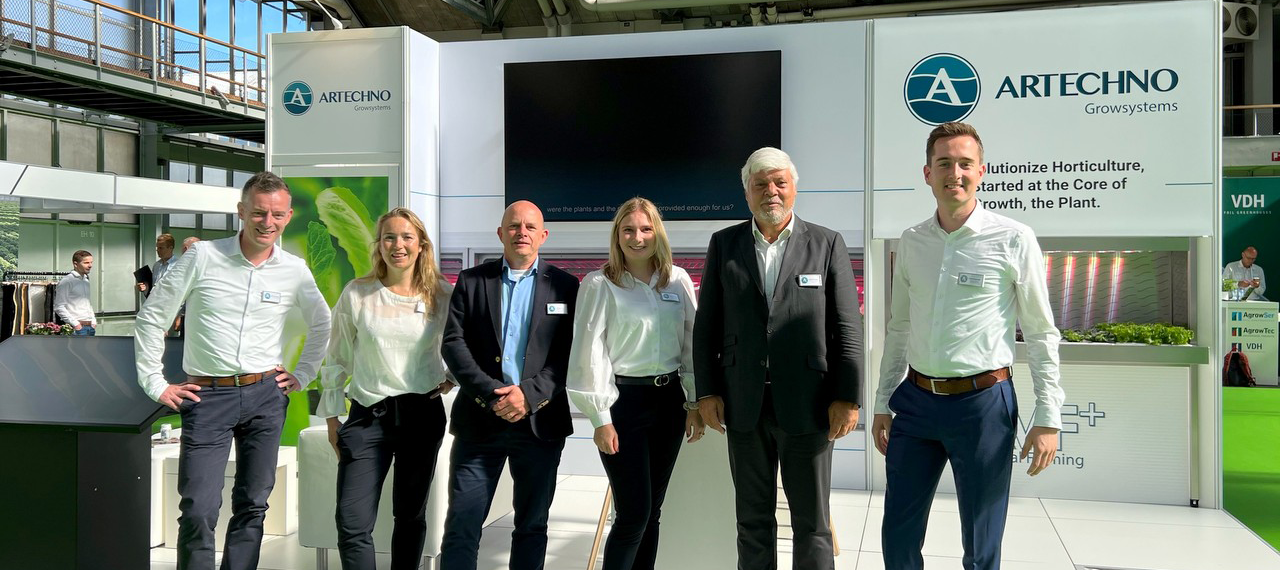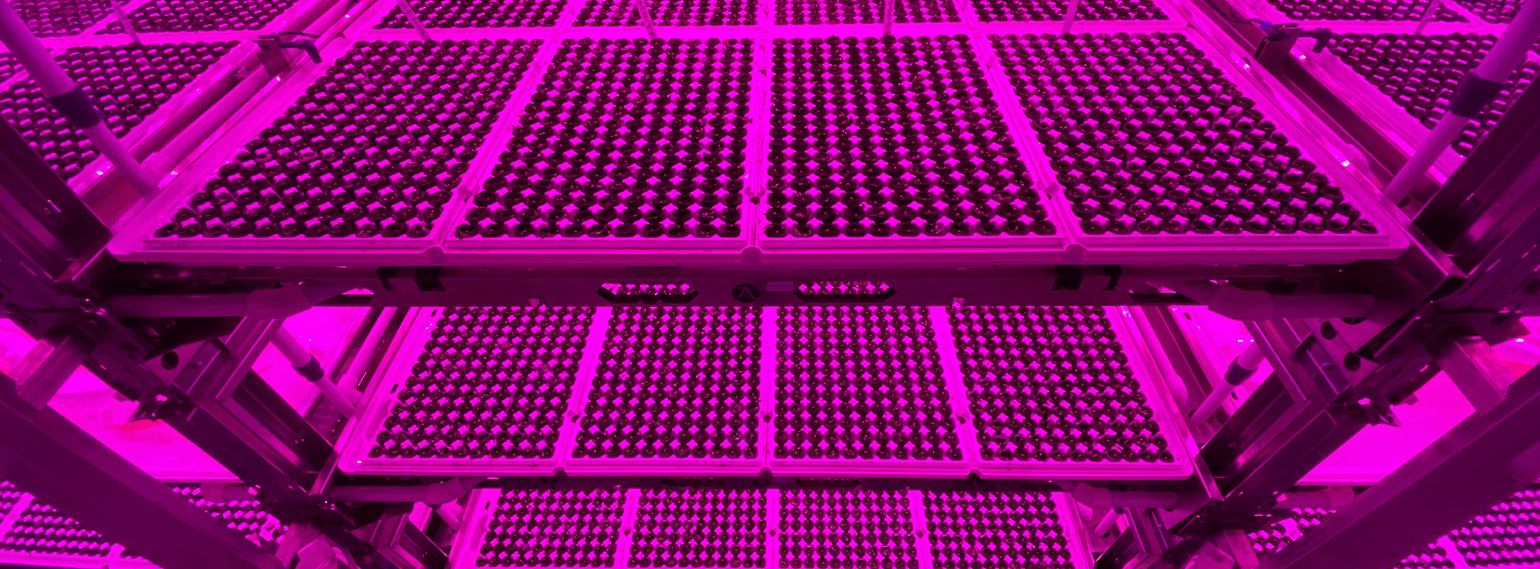What are the types of vertical farming systems?
The world of vertical farming systems is growing rapidly, and several systems are currently on the market. What are the types of vertical farming systems and how do these systems differ from each other? In this article, we explain the various systems.
Contents
What are vertical farming systems?
What do vertical farming systems look like?
In a nutshell:
- There are three growing methods for vertical farming: hydroponics, aeroponics, and aquaponics
- Vertical farms come in all shapes and sizes, ranging from simple two-level systems to elaborate automated systems with multiple levels.
- There are five main options for building and setting up a vertical farm: the climate cell, rack system, container farm, vertical tower farm, and a rotating vertical farm
What is vertical farming?
Vertical farming implies that the crops produced are grown vertically, offering many advantages. In other words, crops are grown one above the other, which is done in a space where all environmental factors, such as temperature and airflow, are controlled.
Although performed indoors, vertical farming is substantially different from other indoor farming methods, such as greenhouse farming, which entails horizontal cultivation.
A fully controlled and climate-controlled vertical growing environment can have different systems and features, which we will cover in more detail in this article.
Summary: In vertical farming, crops are grown vertically in a fully controlled environment. A vertical farm includes several systems and features.
What are vertical farming systems?
A vertical farming system can be divided into 2 topics:
- The internal growth system (the controlled environmental agriculture factors)
- The construction and layout of the vertical farm
3 types of vertical farming
There are different internal growth systems. All vertical grow systems use one of the following types of vertical farming: hydroponics, aeroponics, or aquaponics.
1. Hydroponic vertical farming
The most commonly used vertical grow system is hydroponics. With this technique, the roots of the plants are not planted in soil but in a water solution rich in the essential nutrients only.
The composition of the nutrient solution is regularly adjusted so that the plant continuously grows under the most optimal composition of nutrition.
Characteristics of hydroponic vertical farming:
- Conserves water by reducing evaporation loss
- Nutrient solutions can be perfectly matched to the plant
- Higher costs for nutrients
2. Aeroponic vertical farming
Aeroponics, a variant of hydroponics. With this method, plants grow in air or mist, which is sprayed on their roots several times an hour. In other words, the plants are grown without soil and with very little water usage.
Characteristics of aeroponics:
- Plants' roots are better aerated, allowing them to grow faster
- It is the most efficient vertical farming system as it consumes up to 90% less water than the most efficient hydroponic vertical farming systems.
- Requires precision sensor technology and a strict dosing regime to optimize results.
- Sensitive to power cuts. Prolonged outages can kill the plants because the right amount of water needs to be constantly sprayed on them, and they have no water buffer.
3. Aquaponic vertical farming
Aquaponics is a combination of aquaculture and hydroponics. In aquaculture, organisms are grown in water, while in hydroponics, plants are grown without soil.
Aquaponics combines these techniques by cultivating fish and feeding the plants with the water the fish swim in. The waste from the fish is converted into food for the plants.
Characteristics of aquaponics:
- Longer start-up period as the microbial population needs to grow and stabilize
- Requires a broad knowledge base in aquaculture, hydroponics, and in microbes and nutrient levels
- It is a water-efficient production method
The three vertical farming systems all have their own advantages and disadvantages. It depends on the plant and the wishes of the grower to select the most suitable system.
Summary: There are 3 types of vertical farming systems. We specifically choose Hydroponics because it stimulates the plants in the right way with just the right nutrients without leaving them dry for long periods of time. Aquaponics is an additional water-saving system where plants grow in air or mist; aquaponics is a combination of aquaculture and hydroponics.
What do vertical farming systems look like?
Vertical farms come in all forms and sizes, ranging from simple two-level systems to elaborate automated systems with many layers or tiers.
We list the 5 main options for building and setting up a vertical farm.
Option 1: Climate Cell
.png?width=844&height=606&name=Frame%205%20(6).png)
At Artechno Growsystems, we work with an AVF+ climate cell. The cell contains everything from irrigation to nutrition, light, and automatic transport.
It also includes climatization. This includes temperature, CO2 level, humidity, and air flow.
The great advantage of a climate cell is that you can zoom in very precisely on the plant to give it exactly what it needs.
In addition, a climate cell makes it possible to create and control a homogeneous climate, unlike other systems that are often accommodated under one roof.
The disadvantage of a facility-wide climate is that you must opt for the best environment of the most common denominator to allow all plants to grow. As a result, some plants do not grow in an optimal environment, resulting in a much lower quality.
This is why at Artechno Growsystems, we work with climate cells to create an optimal climate for each plant and thus achieve a predictable output.
Summary: A climate cell allows you to zoom in on the plant and continuously create optimal conditions for that plant. In addition, a climate cell makes it possible to create a homogeneous climate.
Option 2: Rack system
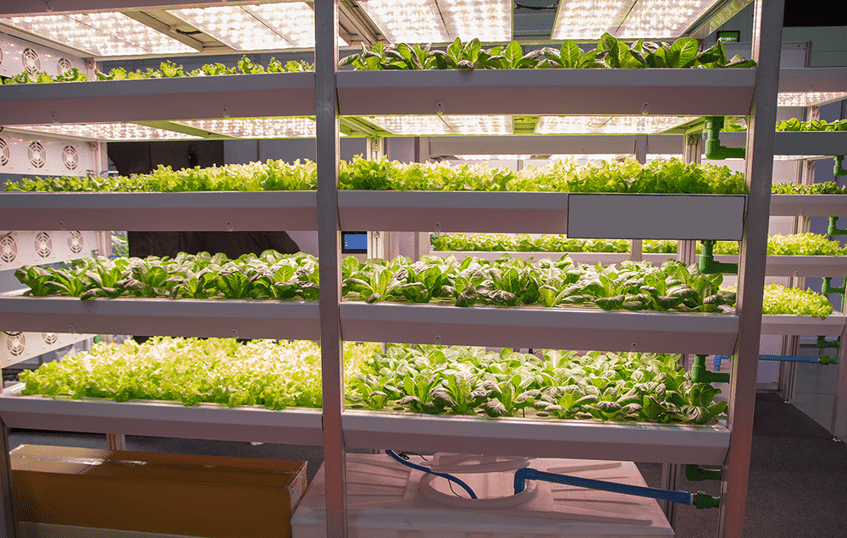
A lot of people who come to Artechno Growsystems think of vertical farming as a rack system. However, this certainly differs from our vertical farms.
A rack system consists of racks and lights in a large indoor area and is consequently less costly than a climate cell.
It is almost impossible to create and maintain a homogeneous climate because of the many different attributes in the room.
For example, the lamps generate a lot of heat that needs to be dissipated from the interior. Otherwise, the temperature in the hall becomes too high, which heats up the plants and dries them out.
The main challenge is the air displacement in the room. Rack systems often involve all kinds of large fans and vent systems to generate as much air as possible and force it through the area. Unfortunately, the gusting air from a fan leads to turbulence. This causes the plants to move, which leads to unhealthy stress levels for the plants.
Furthermore, turbulent air leads to temperature and airflow variations, which means the plants do not all grow under the same conditions. This makes the conditions per plant unstable.
At Artechno, we use laminar airflow. In this system, the air moves from right to left through the middle of the area.
Summary: A rack system consists of racks and lights in a large hall. The advantage of this system is that it is less expensive than, for instance, a climate cell. The disadvantage is that it is difficult to make the climate homogeneous, and therefore, the plants do not grow in optimal conditions.
Option 3: Container farms

In a container farm, everything is contained within a small space, similar to a climate cell. However, unlike a climate cell that utilizes horizontal vertical farming, container farms grow plants vertically or hanging from the walls.
Horizontal, vertical farming is more suitable for automation. In vertical farming, placing the plants in the trays is complex. This logistics process cannot be automated and, as a result, requires considerable manual labor. Automating the process on such a small cultivation area, which is about 24.2 m2, is also not really efficient.
An advantage of a container farm is that the climate can be controlled much better than in a large area such as a rack system.
Container farms are mainly used by smaller businesses, like restaurants. For a profitable high-production vertical farm, it is not a viable option.
Labor aside, this has to do with scalability. You pay an amount per container, and economy of scale is hardly achieved whether you work with 1, 10, or 100 containers.
Summary: Container farms are primarily suitable for small farms but are not a good business model for large volumes. A container farm requires more labor. However, the climate can be well controlled because of the small cultivation area.
Option 4: Tower vertical farms

This vertical farming system uses towers. The big advantage of tower vertical farms is that the energy demand is lower compared to most vertical farming systems due to the use of light in the towers. The challenge with this system is that you have to deal with the effect of the sun, which disturbs the climate in your greenhouse from day to day.
Furthermore, the plants have to be embedded manually, so you spend the savings in energy costs on labor costs in turn.
The tower farms may look cool, but making them profitable is rather challenging.
Summary: The advantage of tower vertical farms is the reduced energy costs due to the use of lights. However, more labor is required to insert the plants.
Option 5: Rotating vertical farm

In a rotating vertical farm, the plants grow on a rotating conveyor. In the center of that conveyor is the light source. The idea is that all the light is utilized because it radiates in all directions.
This may seem like a logical concept, except that a plant needs a minimum amount of stimulation, or minimum light intensity, for a certain number of hours per day.
In other words, a plant needs a certain amount of energy to achieve a certain amount of weight. More is unnecessary, but you will not achieve the optimal result with less.
With a rotating system, the light does not shine continuously on all the plants, and even if an immense amount of light were to fall constantly on a plant, no extra profit would be achieved. The plant requires a certain amount of light; more light does not give a better result.
Summary: In a rotating vertical farm, the plants grow on a rotating conveyor with a light source in the middle. This does not necessarily produce additional profit since a plant requires only a certain amount of energy to achieve a certain weight.
In other words, there are several options. Depending on the grower's needs and capabilities, some are more suitable than others.
Summary
Due to the growing demand in the market, all sorts of vertical farming systems have been developed in all shapes and sizes.
The five main options for building and setting up a vertical farm are a climate cell, rack system, container farm, tower vertical farm, and rotating vertical farm.
It depends on the grower's wishes, goals, and capabilities as to which system is the best suited.
Are you interested in vertical farming? Or do you have any questions? Feel free to contact us; we will happily help you anytime.

